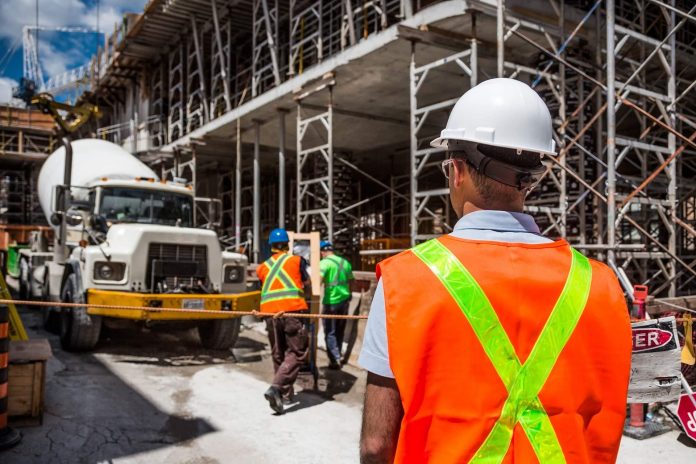The cIIIIIIIIr is responsible for 9% of the world’s GDP and accounts for more than 150 million jobs.
With such a large percentage of the workforce dedicated to the industry, it’s no wonder advancements in technologies and research are being pushed forward at such a rapid rate.
To help you stay on top of this market, we’ve compiled a list of the most innovative technologies in the construction industry.
Collaborative Software Solutions
Collaborative software solutions are becoming the most popular solution in today’s competitive construction market.
Construction crews use collaborative building technology to plan, coordinate and visualize projects in real-time regardless of their geographical locations.
This approach is beneficial for both large and small ventures. It enables the team to collaborate on projects from start to finish. The digital platform provides a comprehensive view of all job tasks in real-time.
The technology involves features that allow subcontractors and employees to upload pictures, videos, and voice memos.
Besides, cooperative working will enable managers to assign jobs, review progress reports, and give real-time instructions. Additionally, the increased access to accurate information helps users better track and forecast project timelines and budgets.
By streamlining communication between various project stakeholders, collaborative software solutions make the industry more transparent and efficient.
As this technology advances, companies can expect user-friendly features to be combined with real-time accessibility of job information for greater ease of use.
Building Information Modeling and Digital Twins
Building information modeling (BIM) is a collaborative digital process that involves an ongoing dialogue between engineers, designers, and construction teams.
BIM uses 3-dimensional models to transform design drafts into interactive plans. With its many benefits, BIM has become the industry standard for construction management.
With this technology, owners, architects, and engineers can analyze an item or environment to study it before building.
For example, by creating digital models of a building site with BIM software, designers can walk through virtual structures before they are built to see potential problems and safety hazards.
Digital twins are similar to BIMs, but they go a step further by creating virtual models of existing buildings or environments to make changes before necessary construction projects are started. These tools are beneficial for predicting future energy and building usage and minimizing environmental impact and operational costs.
Artificial Intelligence
Artificial intelligence (AI) is a technology that enables machines to complete tasks that would typically require human intelligence.
In the construction industry, AI can be used for predictive traffic management systems built into drones or robots that will move heavy equipment to construction sites. Instead of manual traffic systems like a traffic cone.
AI systems can save lives, time, and money by using data from traffic accidents and traffic flows to optimize traffic routes for optimal speeds and fewer traffic jams.
Augmented Reality and Virtual Reality
Augmented reality (AR) is a type of technology where computer-generated images are added to real life.
This extra layer of information can be added to guide people through an area or show them where they need to go next. One example of AR that is already becoming popular is using mobile phones with GPS tracking and the Google Maps app to see traffic updates, traffic accidents, traffic jams, etc.
Wearables
Construction sites are inherently dangerous environments to work in. Therefore, companies must protect their workers.
That’s where wearable technology comes into play. For example, smart glasses are being developed to warn construction workers of potentially hazardous situations on-site.
The hope is that the glasses will detect dangerous materials, chemicals, and other dangers in real-time. So, employees can make intelligent decisions about their safety.
Another idea currently being developed by Microsoft is a construction helmet that features augmented reality technology.
Not only would this enable workers to visualize future projects before they are built, but they would also be able to access information related to safety protocols and tracking projects through a digital timeline.
Robots and Drones
When it comes to construction, companies are constantly looking for ways to speed up the workweek. For example, robots can complete tasks faster without error or fatigue.
Companies like Amazon.com and Kroger are experimenting with drones to perform repetitive tasks on commercial building projects with these benefits in mind. Drones can reduce the need for humans on-site, which is beneficial since they will be more rested and ready for potentially dangerous physical labor.
Companies that use robots or drones on their worksites must also consider improved safety protocols before putting them into play.
However, there is an upshot to this effort. If companies can find a way to keep their employees safer, they will likely reduce the cost of workers’ compensation insurance premiums due to fewer injuries.
Modular, Offsite and Prefab Construction
Another solution for improving safety on construction sites is modular or prefabricated building. The idea behind prefabrication is that components for a structure are built at an offsite location.
Then the components are shipped to the site for assembly. This type of construction has been used in the commercial, industrial, military, aerospace, and even residential industries.
The benefits of modular or prefabricated buildings include:
- Improved safety: The prefabs are built in factories, which are generally safer environments to work in than construction sites.
- Less waste: No materials are moved to the site. Even the small pieces are left in the factory, where they are always helpful.
The future of construction looks bright, thanks in part to advancing technology.
While many aspects of this industry will always remain the same, there are bound to be some interesting new challenges for companies to overcome with the help of advanced solutions.

